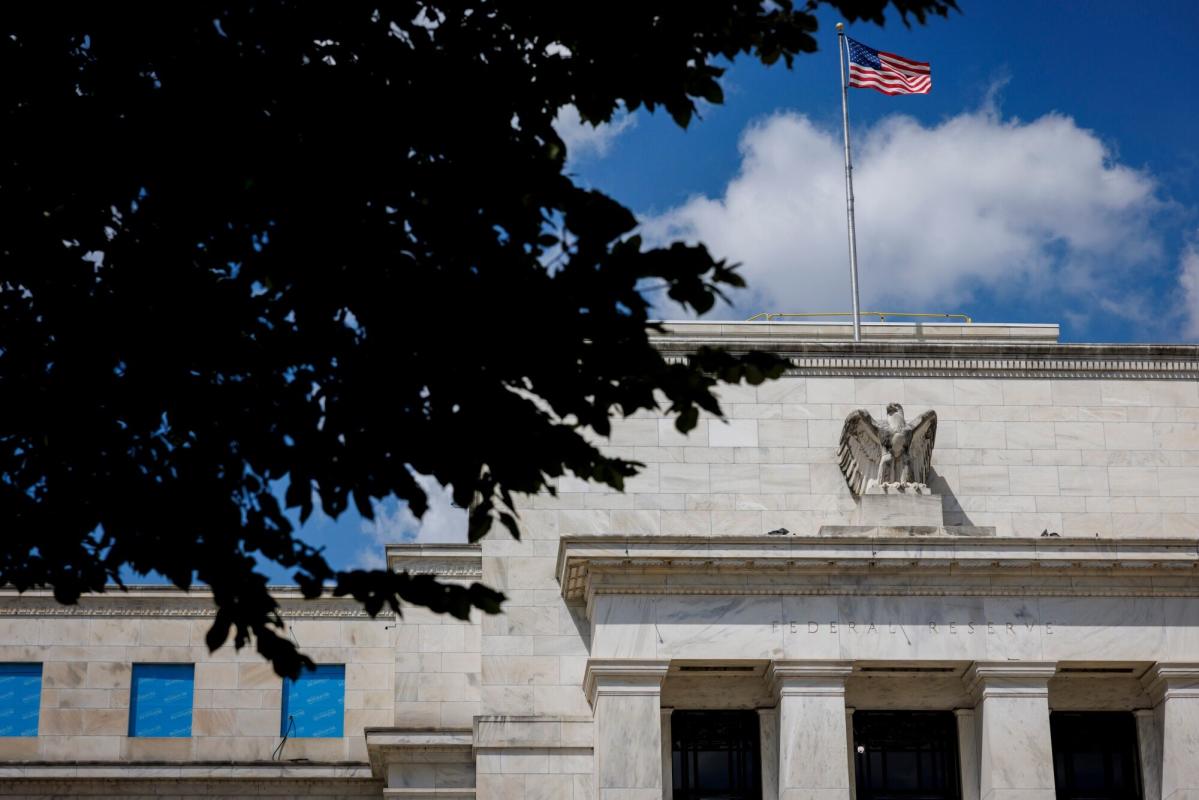(Bloomberg) — Bond traders who struggled to predict how high the Federal Reserve would raise interest rates are finding the way down just as vexing.
Most Read from Bloomberg
At TCW Group Inc., Jamie Patton, the co-head of global rates, is convinced that even the swift easing that’s now baked into financial markets doesn’t go far enough, leaving shorter-dated Treasuries plenty of room to keep rallying. “The Fed is going to have to lower rates faster and more aggressively than what the market’s priced in,” she said.
At JPMorgan Asset Management, Bob Michele sees it differently. He’s betting that the bond market has already run too far ahead of the Fed as the economy keeps chugging along — albeit at a slower pace. As a result, he’s favoring corporate bonds — which carry higher payouts — over Treasuries. “I don’t see anything breaking,” he said.
The divergent views are at the heart of what’s at stake for investors as the US central bank is virtually certain to start cutting interest rates for the first time since 2020 at its Sept. 18 meeting. That prospect alone has already sent bond prices surging sharply as traders seek to get ahead of the moves, creating the risk that markets will again be upended by a post-pandemic economy that’s consistently surprised the Fed and Wall Street forecasters with its resilience.
On Friday, the Labor Department’s employment report underscored the uncertain outlook. Employers expanded payrolls at a slower-than-expected pace of 142,000 in August, capping the weakest three months of job growth since mid-2020. But the slowdown wasn’t sharp enough to tip the debate over how swiftly — or how deeply — the Fed is likely to ease policy in the months ahead.
Traders are still putting the highest odds on the Fed reducing its target rate — now in a range of 5.25% to 5.5% — by a quarter-percentage-point this month, though those at Citigroup Inc. and some other banks are betting on a half-point move. By mid-2025, swaps markets are pricing in that it will be cut to about 3%, roughly around the level that’s seen as neutral to economic growth.
But the Fed’s trajectory has repeatedly blindsided traders since the pandemic. Anticipating that the inflation surge would be brief, they underestimated how high rates would go. Then they prematurely piled into bets that it was poised to reverse course, leaving them hit by new rounds of losses when it didn’t.
That’s sown some doubts about whether bond prices have again run up too far. The two-year Treasury yield, which closely tracks the Fed’s key policy rate, has tumbled to about 3.7% from more than 5% in late April — enough to account for five quarter-point Fed moves. The cheaper borrowing costs have also filtered through to corporate bonds and stock prices, easing financial conditions without any action from the Fed.
“The Fed needs to cut, we all know that, but the question is the pace,” said John Madziyire, senior portfolio manager at Vanguard, which manages $9.7 trillion in assets. He said his firm has adopted a “tactical short bias” toward the bond market since the recent rally.
“If the Fed became aggressive and started doing 50-basis-point cuts,” he said, “making financial conditions even more loose, then we have risk that we get some re-acceleration of inflation.”
So far, though, inflation has been heading in the right direction: On Wednesday, the Labor Department is expected to report that the consumer price index rose 2.6% in August from a year earlier, according to the median forecast of economists surveyed by Bloomberg. That would be the smallest increase since 2021. There will be little new guidance from Fed officials, who are in the traditional blackout period ahead of the Sept. 17-18 meeting.
The bank’s trajectory will depend on whether the Fed pulls the economy into a soft landing or is forced to shift into recession-fighting mode, as it did during the Wall Street credit crisis or after the Internet bubble’s collapse. Right now, economists are largely predicting that the economy will avoid a contraction, leaving stocks holding not far from record highs despite the recent slump.
What Bloomberg’s Strategists Say:
“There’s very little chance that the Federal Reserve is cutting by 50 basis points on September 18th based on 4.2% unemployment. Yet the two-year yield fell. The takeaway, then, is that the pricing for Treasury yields out to two years is very rich and we’re likely to see them rise from here when reality seeps in.”
— Ed Harrison, macro strategist
Read more here.
JPMorgan’s Michele, the chief investment officer for global fixed income, is anticipating that the Fed will wind up only needing to cut its benchmark by 75 to 125 basis points, seeing a parallel to what happened in the mid-1990s. Back then, the economy continued expanding even after the central bank doubled interest rates to 6%, which were only nudged down slightly.
“There’s only been one soft landing that we can all agree on and that was 1995,” he said. “I see a lot of similarities with this time.”
At Nuveen, Saira Malik, its chief investment officer, also has doubts about how far the market has run ahead of the Fed. That’s driven Treasuries to gains over the past four months, marking the longest winning streak since 2021, before the onset of the Fed’s rate hikes.
But she thinks the market is poised for some disappointment. “The Fed will go slower rather than faster because the economy is not on the cusp of a recession,” she said, predicting the 10-year yield could rise back toward 4% from around 3.7% now. “Treasuries have moved a little bit too far, too fast.”
What to Watch
-
Economic data:
-
Sept. 9: Wholesale inventories; New York Fed 1-year inflation expectations; consumer credit
-
Sept. 10: NFIB small business optimism
-
Sept. 11: MBA mortgage applications; consumer price index; real average earnings
-
Sept. 12: Producer price index; jobless claims; household net worth change; monthly budget statement
-
Sept. 13: Import and export price index; University of Michigan sentiment/current conditions/expectations
-
-
Fed calendar:
-
Auction calendar:
-
Sept. 9: 13-, 26-week bills
-
Sept. 10: 42-day cash management bills; 3-year notes
-
Sept. 11: 17-week bills; 10-year note reopening
-
Sept. 12: 4-, 8-week bills; 30-year bond reopening
-
–With assistance from Kristine Aquino and Ye Xie.
Most Read from Bloomberg Businessweek
©2024 Bloomberg L.P.







